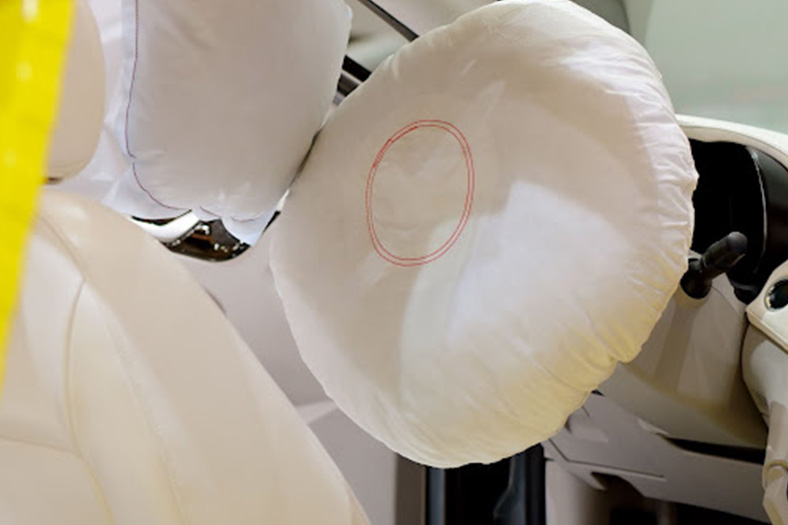Low-Speed Impact Crashes in Colorado
Car accidents include high-speed and low-speed impact crashes. While high-speed accidents are commonly associated with critical injuries and extensive property damage, low-speed impact crashes can also damage vehicles and cause severe injuries. You may need medical treatment and legal guidance if you’ve been in a low-speed car accident. Our Colorado car accident lawyers share with you the details of low-speed impact crashes including common causes, injury types, and more.
Bachus & Schanker Wins – Over $1 Billion Recovered
- What is considered a low-impact collision?
- Can a low-speed impact collision cause injury?
- Common Causes of Low-Speed Impact Car Accidents
- Common Injuries in Low-Speed Car Accidents
- Do airbags deploy in low-speed impact car accidents?
- How to Prevent Low-Speed Impact Car Accidents
- Car Accident Lawyers in Colorado
What is considered a low-impact collision?
Any crash involving a vehicle moving at 15 miles per hour or less is a low-impact collision. Low-impact collisions include front-end, rear-end, and side collisions. Low-speed impact collisions can involve multiple vehicles, a vehicle and pedestrian, or a vehicle and an object, such as a guardrail or a utility pole.
Can a low-speed impact collision cause injury?
A low-impact collision can cause severe injuries. A motor vehicle is made of steel, which is stronger than the skin and bones that hold a person’s body together. That’s why vehicles are less likely to experience severe damage in a low-impact car crash, while drivers and passengers may sustain long-term injuries if the crash involves a vehicle going as slow as 7 mph.
Common Causes of Low-Speed Impact Car Accidents
Both high-speed and low-speed impact crashes stem from common car crash causes, including the following:
- Aggressive driving: Aggressive driving refers to deliberate actions taken that jeopardize safety. Aggressive driving includes tailgating. When a tailgated vehicle stops, following too closely increases the chances that the tailgating vehicle will strike the first vehicle.
- Distracted driving: Any action that takes your focus off the road causes distracted driving. Examples include texting while driving or consuming food or beverages.
- Drunk driving: Using legal, illegal, and prescription drugs or consuming alcohol affects your judgment. Persons under the influence of these substances may not stop in time to prevent a low-speed impact collision.
- Fatigue: Driver fatigue can cause drivers to fall asleep or affect their ability to process changes in their environment and respond appropriately.
- Lack of visibility: Dense fog and heavy rain are examples of things that reduce visibility. Drivers may not see obstacles or other vehicles if they have limited visibility.
- Speeding: Speeding can cause a chain reaction, resulting in low-speed impact crashes. Suppose Person A’s driving below the speed limit because a child ran onto the street. The child leaves, but the driver’s still moving slowly. Driver B whips around a corner at high speed and strikes Driver A’s vehicle, which collides with another vehicle driven by Driver C. The collision between Drivers A and C can be a low-speed impact collision, even if Driver B was in a high-speed collision with Driver A.
Common Injuries in Low-Speed Car Accidents
In addition to bruises and scrapes, low-speed collisions can cause a range of physical injuries, including the following:
- Broken bones: Pressure against a bone can cause open, closed, or hairline fractures. For example, if a person anticipating a collision puts up their arm to keep themselves from striking the dashboard, the force of the impact could break bones in their wrist or hand.
- Internal injuries: Any blow to the body can cause internal injuries, such as internal bleeding or organ damage. Depending on the vehicles or objects involved in the crash, a driver or passenger may strike an object, part of the vehicle, an obstacle, or another person, causing internal injuries.
- Spinal cord injuries (SCIs): A spinal cord injury could require months or years of treatment. Victims of SCIs may need surgery, and some SCIs are permanent.
- Traumatic brain injuries (TBIs): Any blow to the head can cause a TBI. While some may recover from minor TBIs, such as concussions, others suffer permanent brain damage.
- Whiplash: Whiplash is a soft-tissue injury primarily affecting the person’s neck, upper arms, and shoulders.
Do airbags deploy in low-speed impact car accidents?

Airbags can deploy in a low-speed collision. Although most airbags deploy at speeds of approximately 16 mph or more, some airbags deploy at lower speeds if the occupant isn’t wearing their seat belt. In such cases, airbags may deploy at speeds at low as 10 mph, which qualifies as a low-speed impact crash.
How to Prevent Low-Speed Impact Car Accidents
Preventing low-speed collisions begins with improving your driving habits. Avoid eating or drinking in your vehicle, and turn your cell phone’s ringer off while driving to eliminate common distractions.
Maintain a safe distance between yourself and other vehicles. This gives you more time to prevent a collision if a vehicle suddenly stops in front of you.
Stay alert and ensure you’re capable of responding while driving. Avoid driving after using prescription, legal, or illegal drugs or consuming alcohol. Ask someone else to drive if you’re tired, and ensure you get enough rest at night to avoid driver fatigue.
Remaining vigilant is another way to reduce your chances of an accident while driving. Check your mirrors regularly and keep watch for pedestrians, wildlife, and other vehicles. This ensures you’ll identify potential issues and can take steps to avoid a collision with a person, animal, or distracted driver.
Car Accident Lawyers in Colorado

In addition to costs incurred from property damage, you could struggle to pay deductibles and copay fees if you need treatment for a personal injury after your accident. You could incur other expenses if, for example, whiplash or an SCI causes a limited range of motion that prevents you from working.
Contact Colorado car accident lawyers to get expert legal insight if you’ve been in a low-speed impact crash. Don’t assume that you don’t have grounds to pursue a case or a good reason to consider legal action. We’ll look after the legal paperwork and communication with insurance companies and use our Colorado car accident law knowledge to get you a fair settlement.
Sources
Airbags. (2022).
How Even Slow-Moving Collisions Can Cause Big Problems. (2022).
Whiplash. (2022).

Written and Legally Reviewed By: Kyle Bachus
![]() 4.6 ★★★★★ 1,461 Google Reviews
4.6 ★★★★★ 1,461 Google Reviews
Kyle is a member of the Colorado and Florida Bar associations and has served on the Board of Directors of the Colorado Trial Lawyers Association for more than twenty years in total. Over the years, Kyle has achieved justice for many clients. He has served on numerous committees and repeatedly won recognition from his peers at both the state and national level. He is proud of the role he has played in the passage of state and national legislation to protect consumers and is a frequent speaker and guest lecturer.
